Pixelfed account: https://pxlmo.com/buffy
- 52 Posts
- 56 Comments

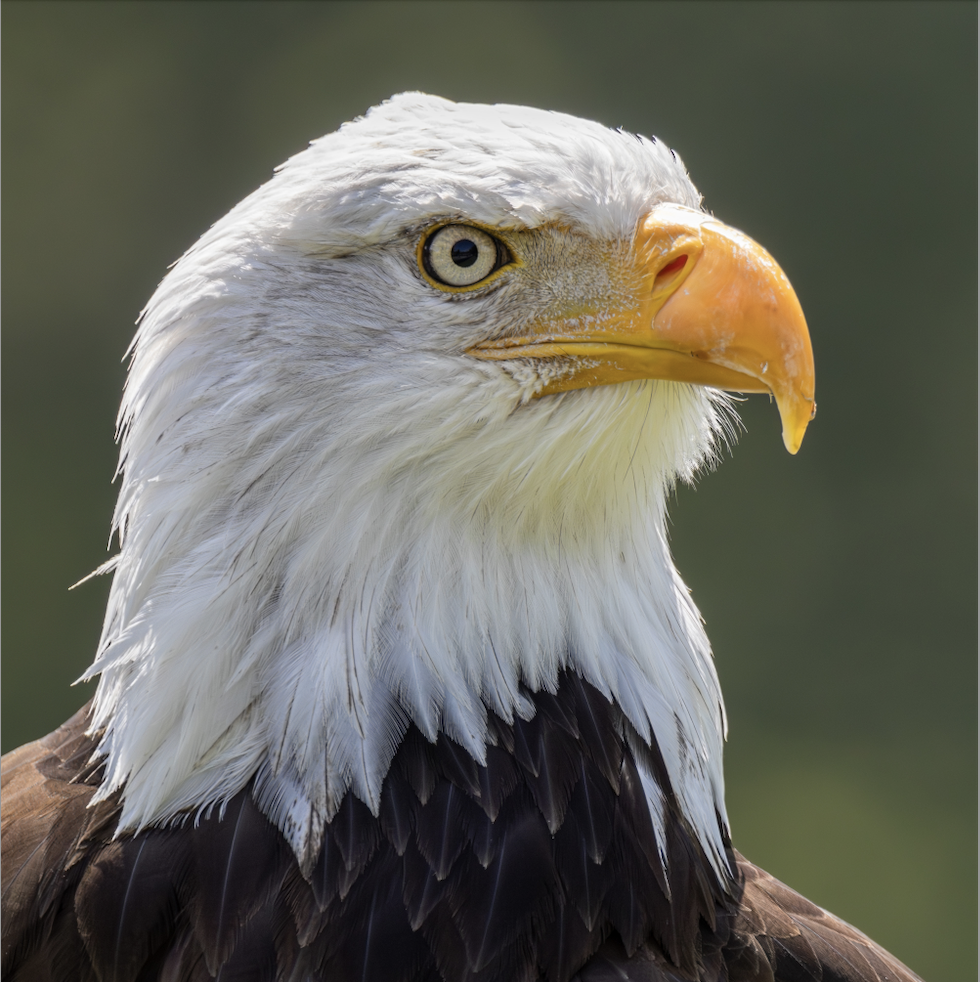 2·3 months ago
2·3 months agoThanks! It’s always nice to see a Steller’s Jay, gotta love their mohawks and beautiful colors!
My pleasure. I’m looking forward to seeing your posts if you ever feel like sharing. If you have any questions, you can ask them here and I’d be happy to help!

 1·3 months ago
1·3 months agoOh, of course I’m not comparing them to those forsaken seabirds!

 2·3 months ago
2·3 months agoI actually think something like that was happening when I took this picture. The park was full of birds and the jays were all hanging out together, collectively making a lot of noise seemingly out of nowhere.
Bear in mind that I’m not a pro and I’m a hobbyist with “entry-level” equipment that I bought more than 10 years ago, even though I started shooting birds the past year or so. I’m commenting to add the perspective of a person who just happens to casually photograph birds on weekends.
I mostly use a Nikon D3200 APS-C with a kit lens (18-200mm), but I’ve had a Sigma 18-300mm and a Tamron 150-600mm in the past.
First thing that might surprise you, I end up with way less keepers than a person with reliable autofocus and good low-light performance.
Second, you do need to get pretty close most of the time, regardless of reach, especially for small birds. Usually, I will take “safer” shots and approach the bird slowly, trying to achieve the frame that I want.
Here’s an example of a “safer shot”, straight out of camera (using the 18-200mm lens):
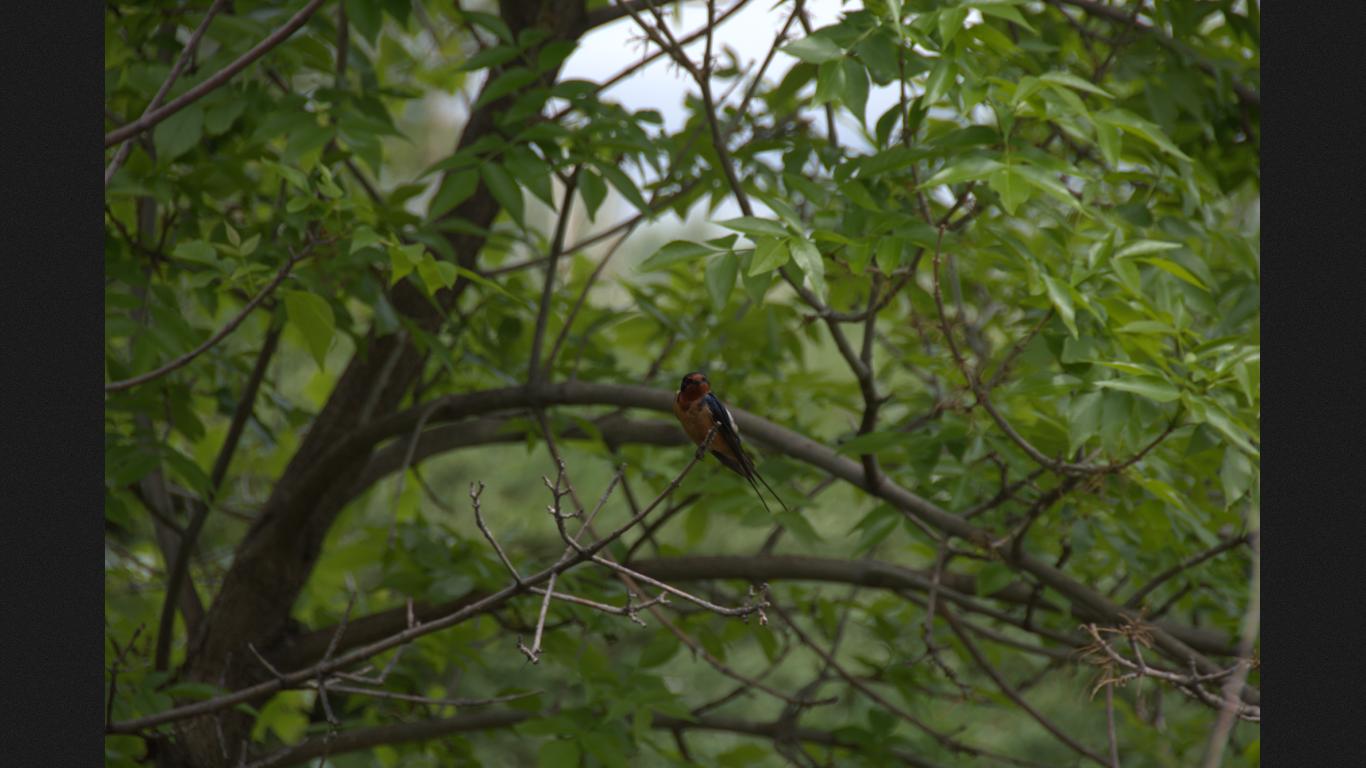
I could walk forward two more steps to improve framing, before I was limited by a creek in front of me,
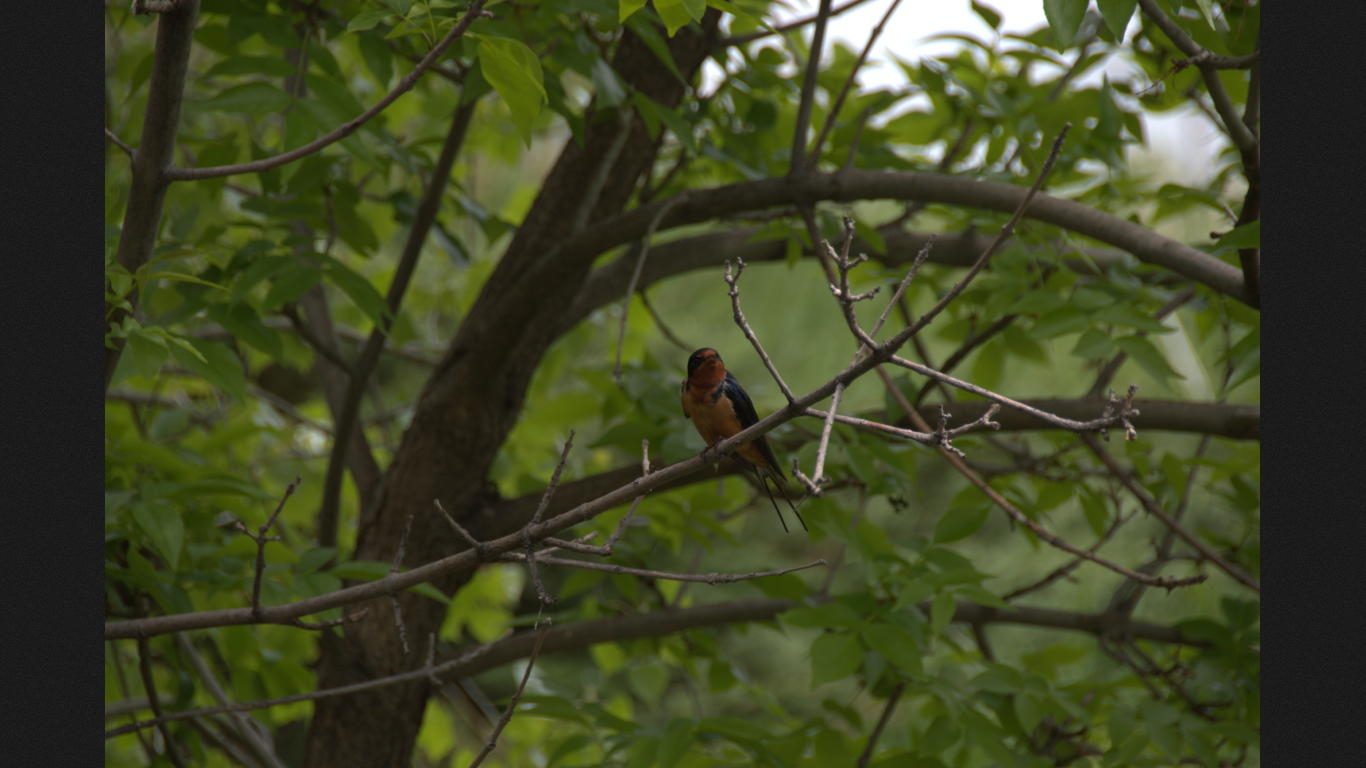
The final shot, illustrating how much I usually crop
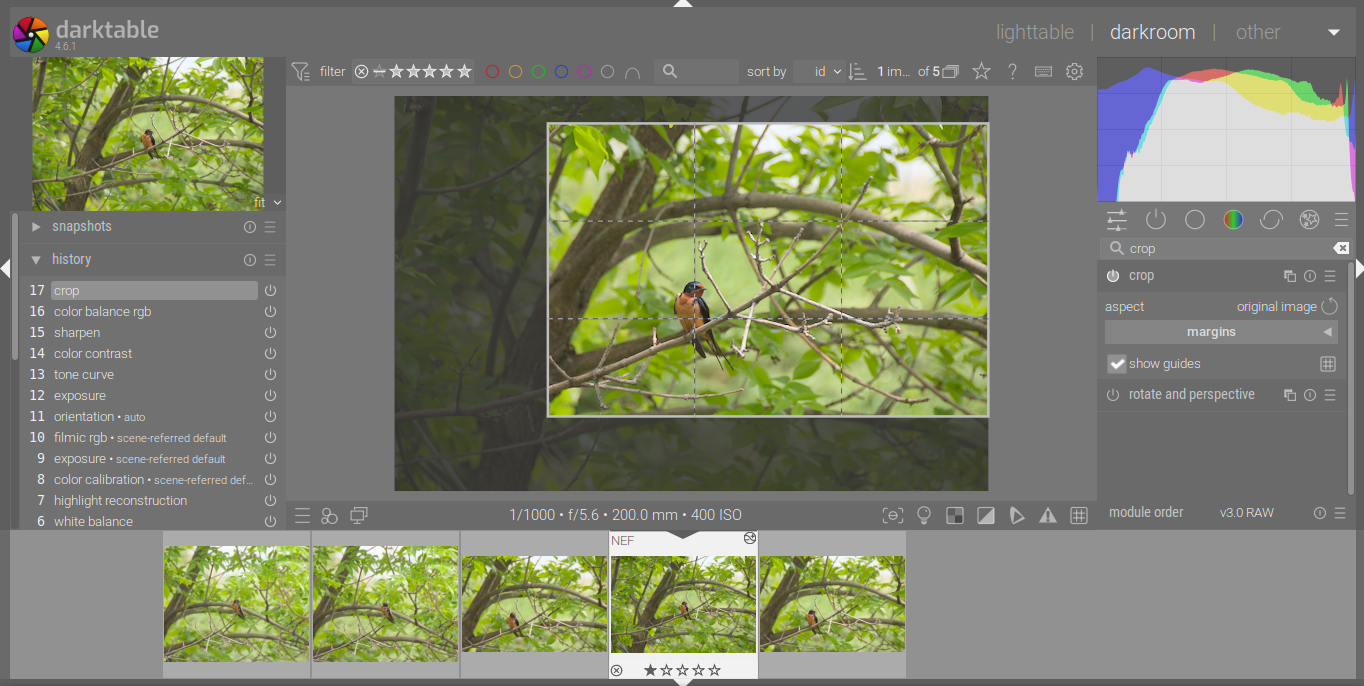
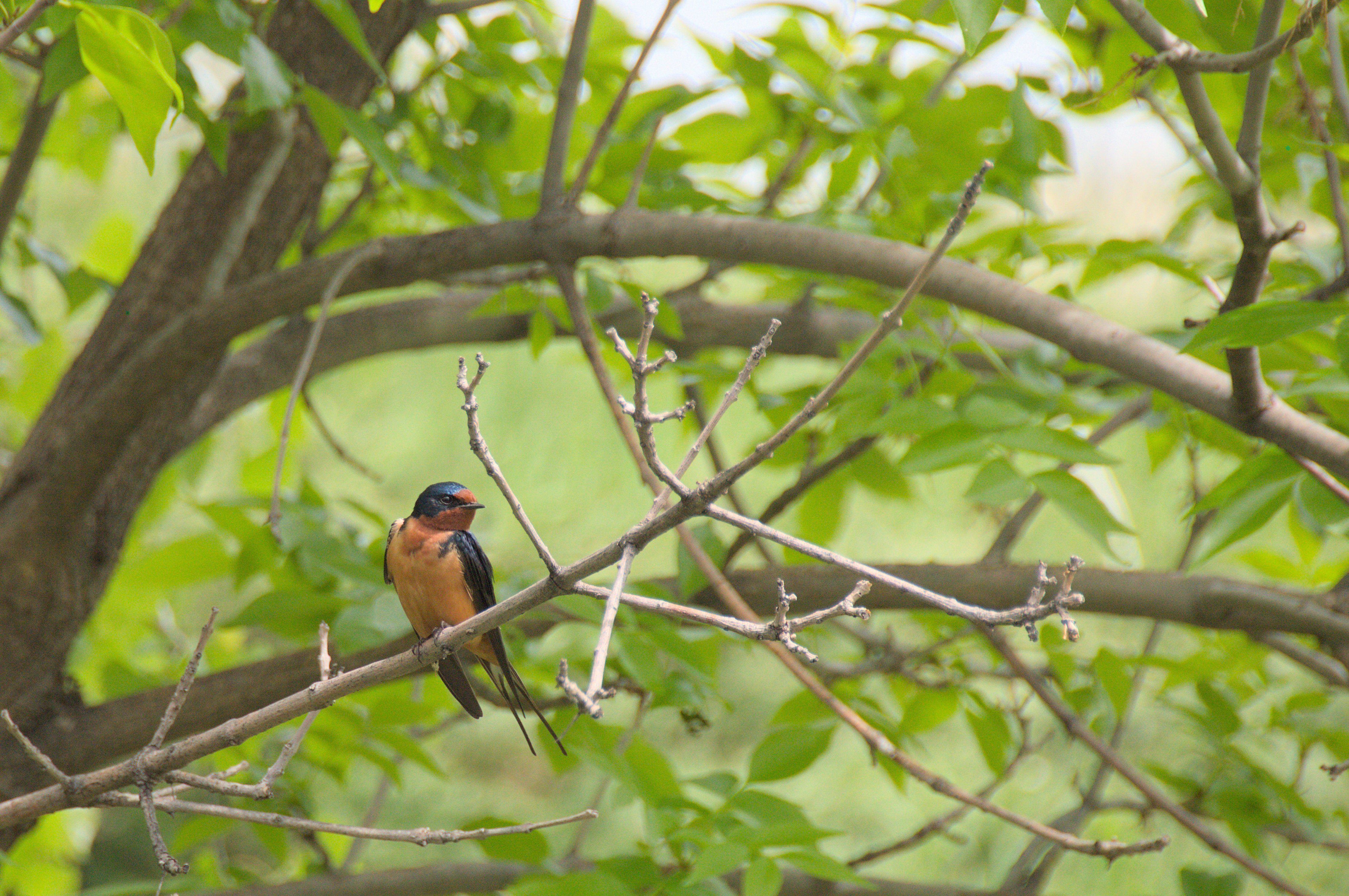
Using the same Barn Swallow location as an example, I know from experience that they perch there if I “come early” and wait standing still for long enough (~15 minutes). So that’s what I did when I went there the other day, standing at the same spot, but using the Tamron 150-600mm instead. This time, I didn’t have to crop, since I pre-framed my picture, knowing their approximate size and that they would be there sooner or later.
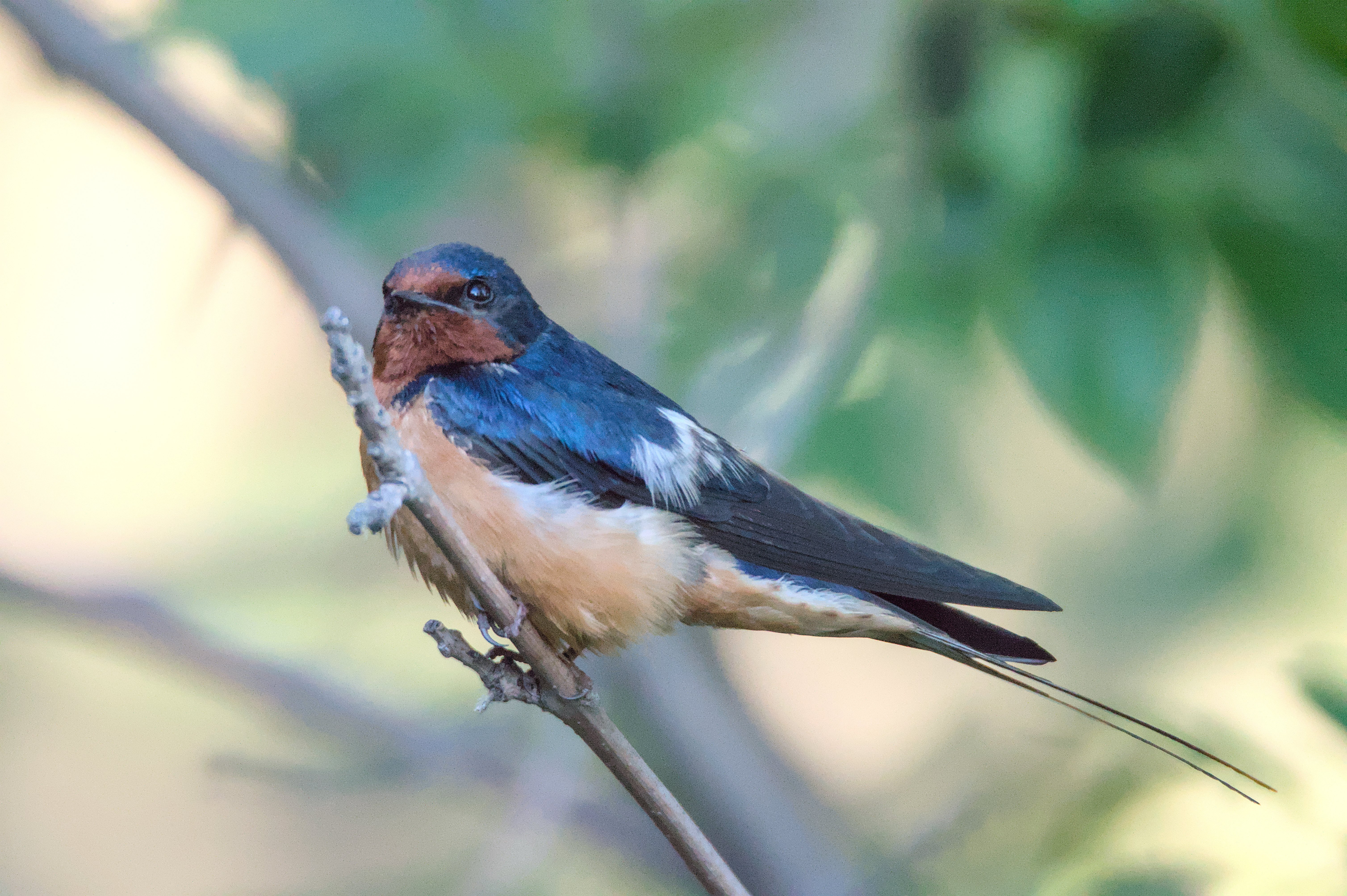
There are situations where you need to crop a bit more, especially for birds that are both small and fast.
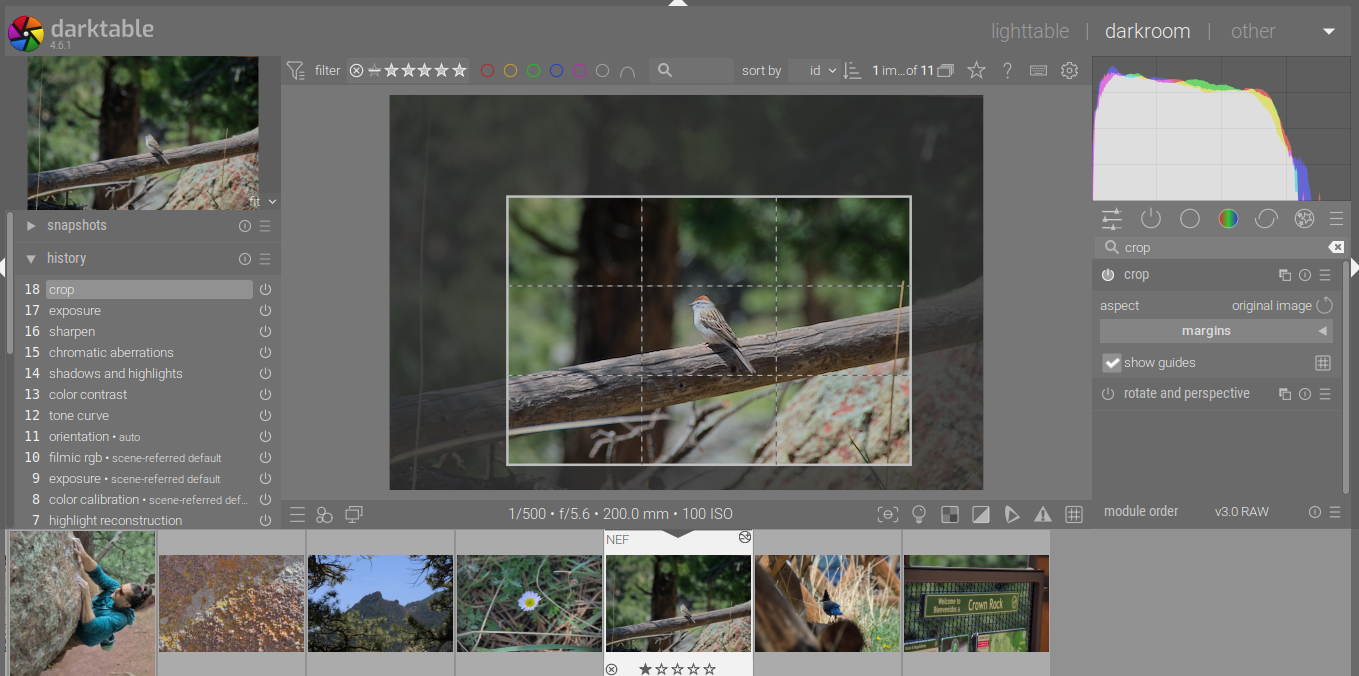
It took me close to 30 minutes to take this photo (D3200 + 18-200mm), since the chipping sparrows were zipping around, so I had to patiently wait for one to be within reach. I took exactly 6 pictures, two steps, lay down on the ground, one shot, two steps, lay down on the ground, one shot, repeat. Until the bird flew away.
I would say 200mm on cropped (300mm full frame equivalent) is when you can start to get good pictures: challenging but doable. 300mm on cropped is fairly nice (450mm equivalent). I don’t think there are crazy improvements from 450mm–600mm, since 450mm is already nice for larger birds like jays or blackbirds, and ~500mm may be too short to reliably capture some smaller songbirds. 800mm or so is the longest I’ve tried and IMO it would be very challenging to have good enough technique to pull it off beyond that.
Of course, a person with a high-resolution, low-light beast will be able to crop more aggressively than I do. Especially if they just post their pictures online, where basically anything at 2MP or so will do.

 3·3 months ago
3·3 months agoOh yes! Here they can be really shy when they’re not in the mood, but on chatty days, oh boy, they will be caw, caw, caw, caw staring at you the whole afternoon.
That is true. I’m glad that here there are people who look after our ecosystem.
But I like to think that in most cases where hikers disturb the environment, it is due to ignorance. I don’t think most people realize how fragile some habitats are and what is or isn’t okay to do, that’s why signs and barricades and whatnot are important.
Ha, that’s so cool!
It makes sense, this was close to a creek and the area is significantly fire-prone. I am sure that the recovery after a wildfire would be way harder if people were to have free access to such a sensitive habitat.

 2·4 months ago
2·4 months agoTo be fair, they are very common birds in many places!

 4·4 months ago
4·4 months agoOne of the reasons I really like seeing your posts is that the birds are so exotic to me!
Shout out to @snlug@lemmy.ca and @adjjjj@lemmy.world too!

 2·4 months ago
2·4 months agoI am half-joking because I know if I go to a different area I will spot other birds. But also I went to a place where there are (in theory) roughly 75 bird species inhabiting the space this month, and it’s clear that the vast majority of animals you see there are from the same species. You need to be consistent, persistent, and diligent to spot something “rare”. But that’s the joy of it, so it’s all good!

 2·4 months ago
2·4 months agoThanks! I didn’t have the icc profiles correctly set, which might be one of the problems with my setup.
I was initially having issues with the
Raster2CanonIJSandCommand2CanonIJbinaries (that I copied to/usr/lib/cups/filter): cups was raising some errors when executing the scripts. But after fixing those, I wouldn’t get any further errors or warnings, although the printer would simply be unresponsive while the job was set as “completed”. I will check if the problem was the lack of icc profiles under /usr/share/color/icc.

 1·4 months ago
1·4 months agoThat I understand, but my problem is the ppd file includes paths like
*cupsFilter: "application/vnd.cups-command 0 /Library/Printers/Canon/BJPrinter/Filters/Command2CanonIJ.bundle/Contents/MacOS/Command2CanonIJ". I extracted those binary files too, put them in a cups folder, and adapted the path to point at the correct locations, but the scripts don’t seem to work on Linux. Same thing for the turboprint thing, the commands like (canontoturboprint) are not doing anything from what I can tell

 1·5 months ago
1·5 months agoI could successfully decompress all the relevant files from the dmg file. Now I need to figure out a way of properly installing them in a cups directory. For instance, I don’t know where I should put
/Library/Printers/Canon. But it seems to me that I have all the files required to make it work.

 2·5 months ago
2·5 months agoThanks for the recommendation! I tried both, but sadly it didn’t work.
I could extract the ppd file from the MacOS driver, but I still need to substitute some OS specific paths that lead to executable files and icc profiles, like
*cupsFilter: "application/vnd.cups-raster 0 /Library/Printers/Canon/BJPrinter/Filters/Raster2CanonIJ/Raster2CanonIJS.bundle/Contents/MacOS/Raster2CanonIJS". Not that many, just two or three. I will most likely try to install the drivers on a MacOS VM and see if I can extract those files and place them in a Linux-specific cups directory (/usr/lib/cupsor something). I think so far the odds are even.Update: It looks like I have all the binary files with me. Raster2CanonIJS, Command2CanonIJ, the ICC profiles and whatnot. I’m now looking for some guidance on where I should place those files on Linux, that would belong in
/Library/Printers/Canon/..., etc. on MacOS.

 10·5 months ago
10·5 months agoThanks! It seems like the “dead link” is just telling us how to install any printer using CUPS, sadly. But the second link might help me, given that I can try to extract a ppd driver from the provided macOS drivers.

 7·5 months ago
7·5 months agoYou are right, those are contradictory. I meant doing it for now and sandboxing the VM while I work on finding a solution. I’m now trying to extract the useful part of the MacOS drivers and see if I can run it natively on Linux.
Edit: I edited the original post slightly to address your point, which I fully agree with.

 1·5 months ago
1·5 months agoI can post more photos of that specific tree later this week

 3·5 months ago
3·5 months agoThat’s awesome! Thank you for sharing that, because I actually looked it up and look what I found: https://www.lib.montana.edu/acoustic-atlas/acoustic-atlas-blog/posts/can-robins-hear-worms.html

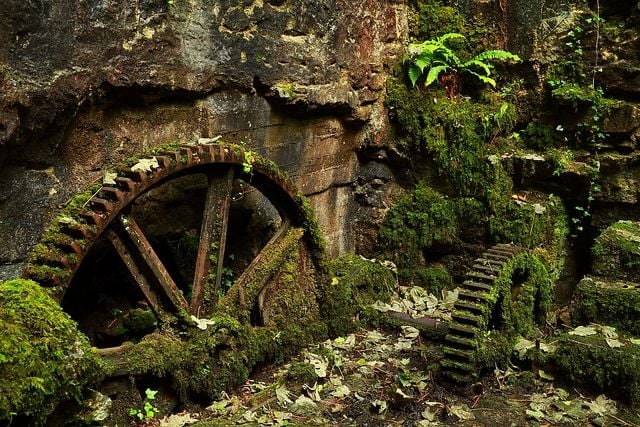
And he knows he’s the boss! I have a 4K video of him, too. I’ll see if I can upload it somewhere and share it here